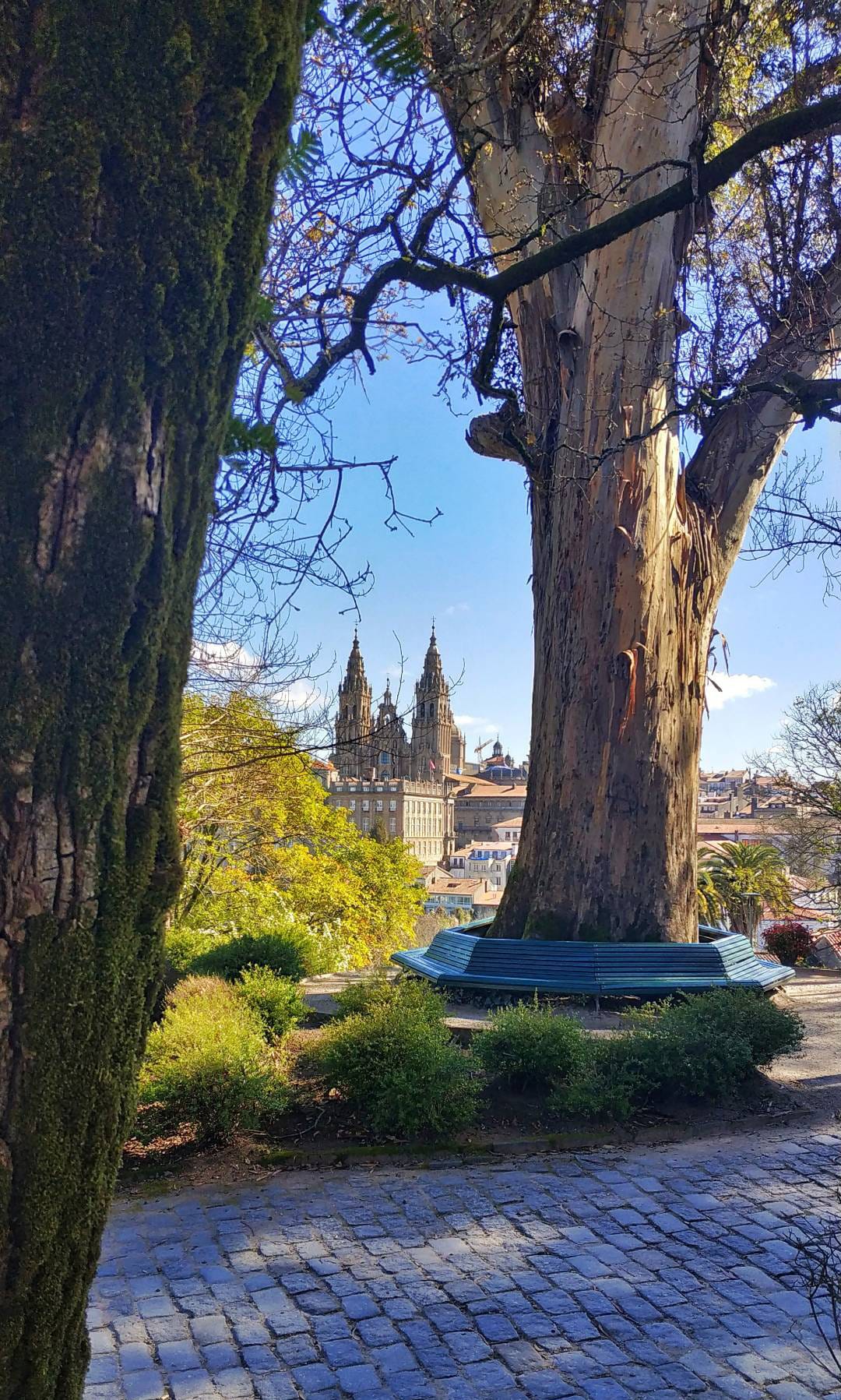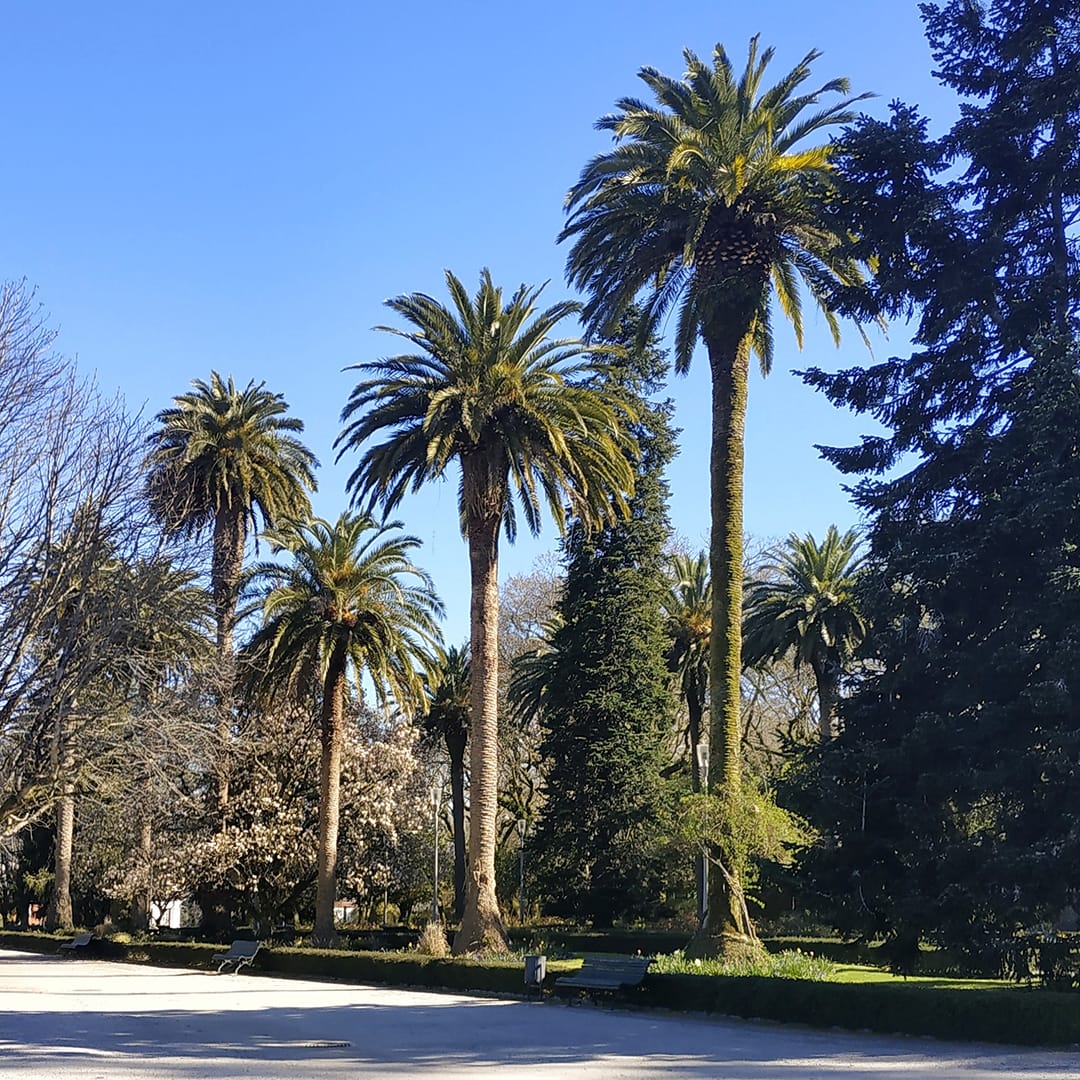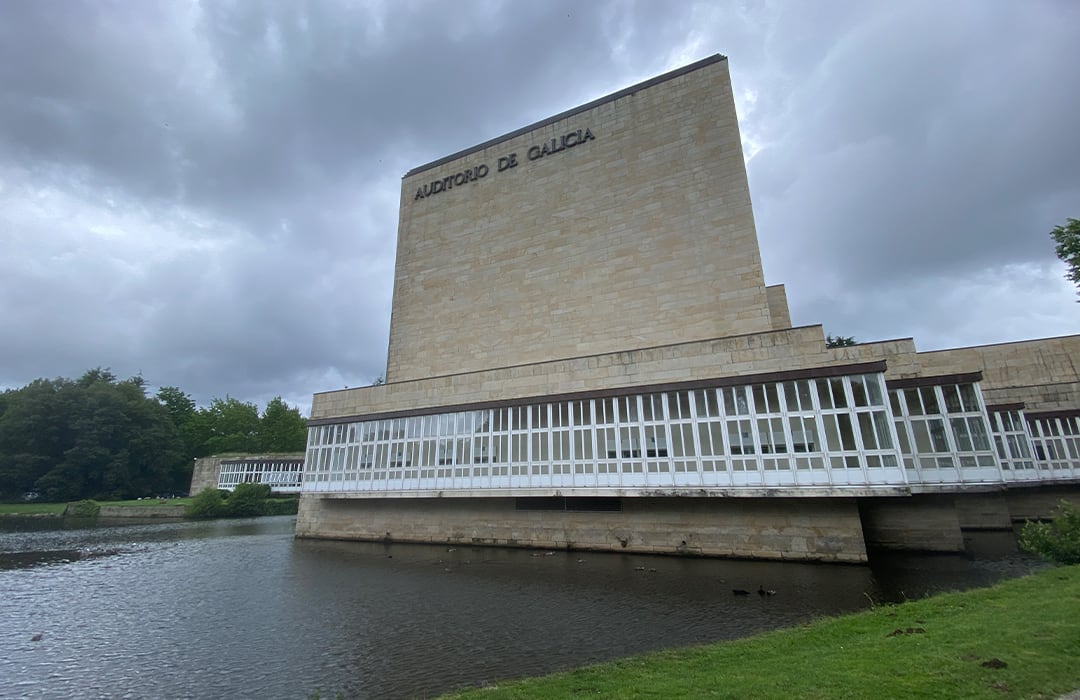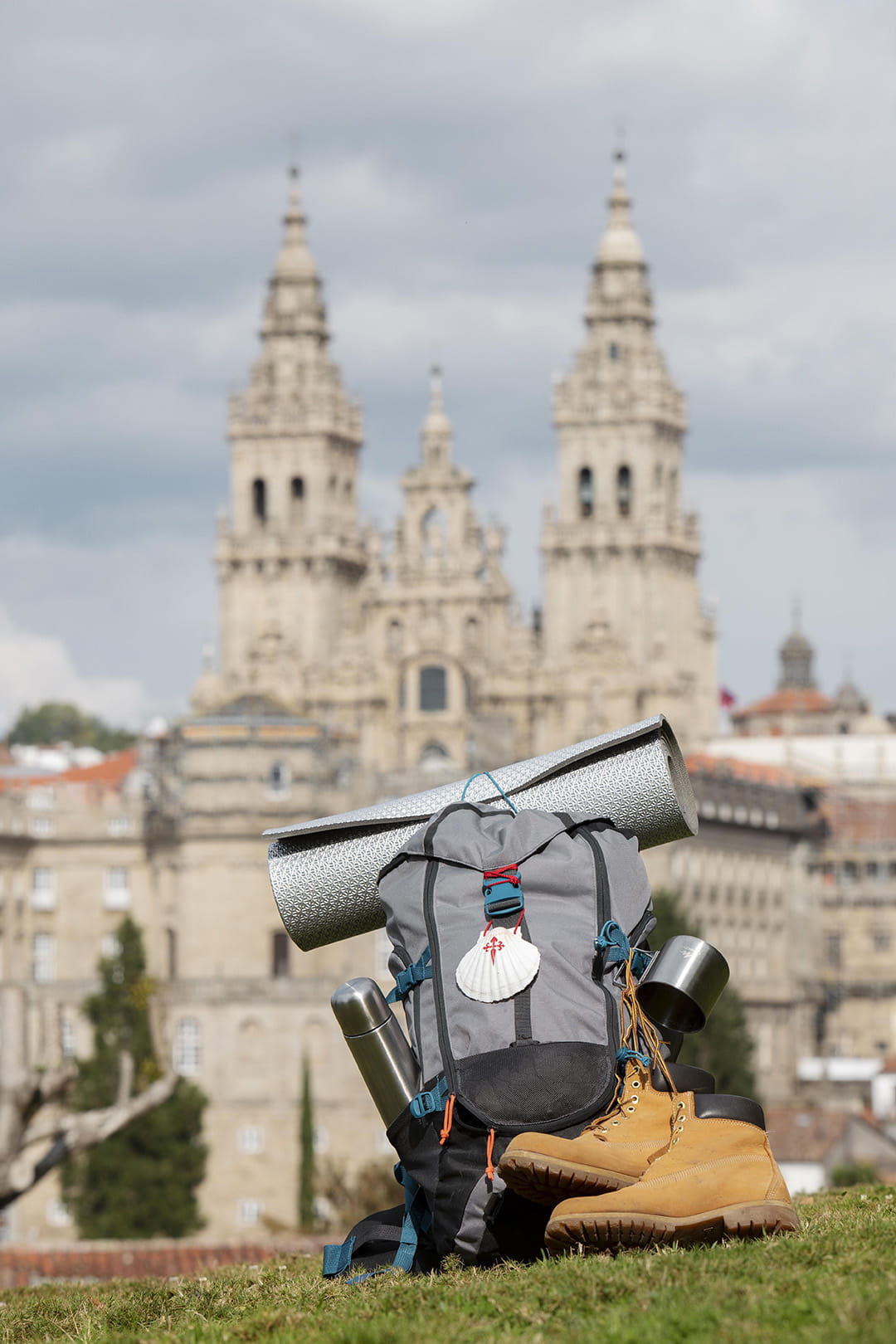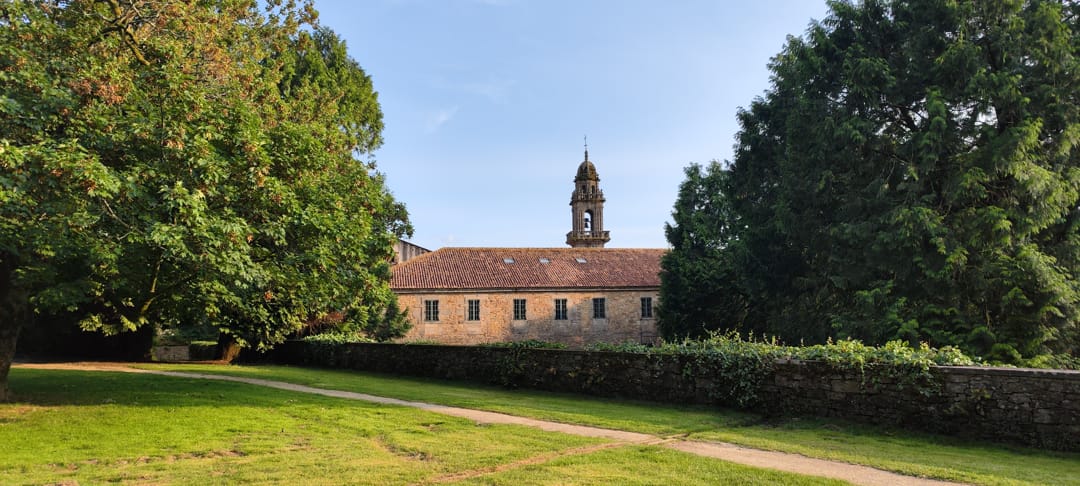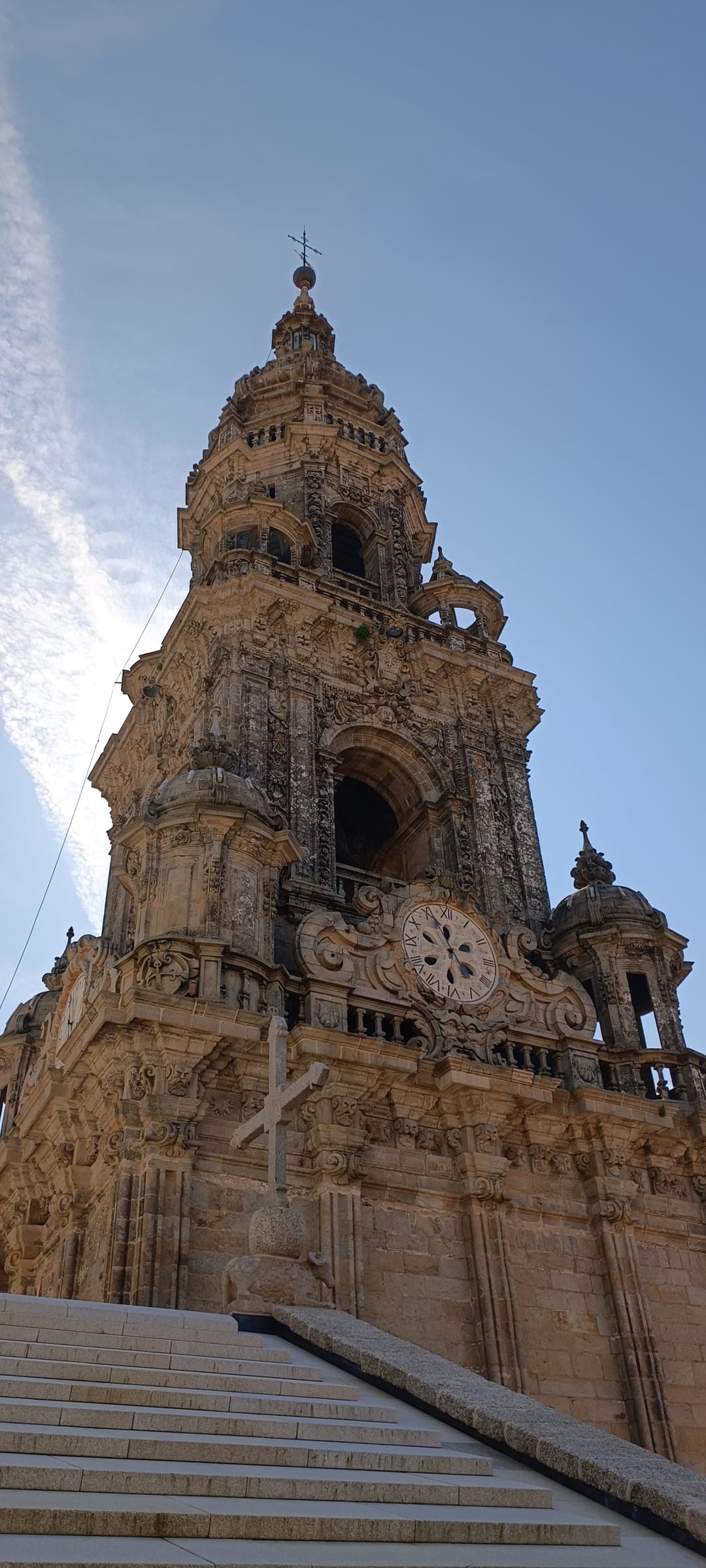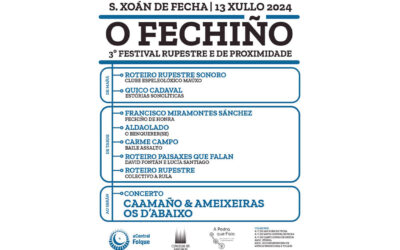visit
COMPOSTELA
I LOVE COMPOSTELA brings you closer to Santiago de Compostela, cultural center of northwestern Spain for the delight of the senses.
a thriving city
From prehistory to the Romans
Santiago de Compostela is a city with a rich and fascinating history dating back to Roman times, and perhaps even earlier. The region where the city is located is believed to have been inhabited since the Bronze Age and to have been an important commercial and cultural center.
During Roman times, a Roman villa was built on the site. After the fall of the Empire, it became part of the Suebi kingdom and later of the Visigothic kingdom. During the Middle Ages, Santiago de Compostela became an important religious and cultural center, thanks to the construction of the Cathedral of Santiago and the popularity of the Camino de Santiago, which attracted thousands of pilgrims from all over Europe.

Santiago de Compostela in the Middle Ages
During the Middle AgesSantiago de Compostela became an important important center of pilgrimage after the discovery of the tomb of the apostle Santiago. A legend tells that the body of Santiago was brought to the Iberian Peninsula after his death by his disciples, and that he was buried in a secret place. Eight centuries later, a hermit named Paio discovered the tomb and led to the construction of a church on the site. The church became a relevant pilgrimage center, and the city grew around it.
In the Middle Ages, Santiago de Compostela became a valuable cultural and scientific center. The University of Santiago de Compostela was founded in the 16th century, and became one of the most important educational institutions in Spain. The city also housed fundamental libraries and archives, such as the Library of San Martín Pinario and the Archive of the Kingdom of Galicia.
During the Middle Ages, the city was also the scene of well-known battles and conflicts, such as the Battle of Clavijo in the 9th century and the War of Independence in the 19th century. However, the city managed to survive these conflicts and became an important tourist and cultural center today.
Our contemporary history
In the 19th century, Santiago de Compostela experienced a period of significant changes. During the War of Independence and the Carlist Wars, the city suffered significant damage and lost much of its cultural and artistic heritage. However, at the end of the century, the city began to experience a cultural and economic renaissance.
In the 20th century, Santiago de Compostela became a university and tourist city. The University of Santiago de Compostela became one of the most relevant educational institutions in Spain, and the city began to attract scholars from all over the world. In addition, the Camino de Santiago became an increasingly popular pilgrimage route, which boosted tourism in the city.
During the 20th century, Santiago de Compostela also witnessed very important historical events. In 1936, the city was occupied by Republican forces during the Spanish Civil War, and suffered considerable damage. In 1989, the city was declared a World Heritage Site by UNESCO, which led to an increase in tourism and the preservation of cultural heritage.
Today, Santiago de Compostela is a vibrant and cosmopolitan city, combining its rich history with a modern and dynamic life. The city is known for its baroque and medieval architecture, its traditional gastronomy and its university atmosphere. In addition, the Camino de Santiago remains one of the world’s important pilgrimage routes, attracting thousands of people from all over the world every year. Santiago de Compostela is a city that has been able to adapt to the changes and challenges of history, and that continues to be a place full of life and tourist attractions.

culture
University of Santiago de Compostela
The centuries of history of the fifth oldest university in the country give the University of Santiago de Compostela a solid academic foundation that supports its present achievements and future challenges.
Its origin is linked to the work of Lope Gómez de Marzoa, ex-regidor of the city, who founded a Latin Grammar Study in 1495 in the Benedictine monastery of San Paio de Antealtares. In 1501, the initiatives of Lope de Marzoa and the Diego de Muros family joined forces to promote this study. In 1504, the Diego de Muros obtained a papal bull from Pope Julius II that placed this Studio under the dependence of the Cathedral Dean and allowed the creation of chairs of Canon Law and Arts, similar to those existing in the Universities. Finally, in 1506 a chair of Canons was created, while that of Grammar was taught by Pedro de Vitoria.
The period in which the University obtained its confirmation is marked by the figure of Archbishop Alonso III de Fonseca y Ulloa, a Renaissance patron and scholar who maintained contact with thinkers such as Erasmus of Rotterdam. In 1521, he founded the Colegio de Santiago at the University of Salamanca and in 1522 he promoted the creation of the new Compostela College for theology students. This College was opened in the old Hospital of Santiago Alfeo in the Acibechería, and later a new building was constructed according to the will of Alonso de Fonseca in 1531. In 1526, Pope Clement VII signed a bull recognizing the Colegio Santiago Alfeo in Santiago and allowing it to obtain university degrees.
Despite the institutional uncertainty, in 1555 the first Constitutions of the University of Santiago were approved, which placed it under royal patronage. These Constitutions strengthened grammar studies, promoted the Faculty of Arts and confirmed the Faculty of Theology. In 1567, the Faculty of Canons was created and academic degrees of bachelor’s, bachelor’s, master’s and doctorate in Arts, Theology and Canons were granted to non-resident students of the Colegio de Fonseca. Subsequently, the Colegio de San Patricio or Colegio de los Irlandeses, the Colegio de San Clemente and the current Colegio de San Jerónimo in the Plaza del Obradoiro were created, where the Faculty of Arts was reinstalled. The Faculties of Law and Medicine were established in 1649 with their corresponding degrees.
In 1751, important reforms were made at USC, such as the expansion of the number of professorships, including several of a scientific nature, and the reduction of ecclesiastical control. Although it lost autonomy due to institutional centralization in Spain after 1770, Charles III granted it the title of “regia” and further reforms were made in 1771, increasing the number of chairs to 33. During this period, enrollment reached 1100 students enrolled in 1790, with the majority in the Faculties of Arts and Theology.
After the expulsion of the Jesuits in 1767, the University of Santiago acquired the land and buildings of this religious order, inaugurating in 1767 a new university building. 1805 the new building, which today houses the Faculty of Geography and History. New curricula were introduced and chairs previously under the control of the Jesuits, Benedictines and Dominicans were recovered. However, war, persecution and political strife affected the university’s progress.
In the 20th century, USC experienced significant growth with a new generation of intellectuals. There was an increase in the number of students and academic offerings. During this period, relations were established with foreign institutions and women were allowed access to the classroom. The University’s library and historical heritage were also expanded.
The military uprising of 1936 and the civil war had a significant impact on the university. For decades, it was under the control of the National-Catholic regime, but at the end of the 1960s it began to undergo changes thanks to student demands, the critical incorporation of new professors and the influence of social dynamics favorable to democracy.
In the democratic and autonomous scenario of Galicia, the University of Santiago underwent major structural, academic and sociological transformations. Although the universities of A Coruña and Vigo were created, USC continued to grow and in the 1990s had more than 45,000 students. At present, the two university campuses, in Santiago and Lugo, offer nearly 30 centers, 80 departments and more than 70 degrees, in addition to numerous facilities. USC continues to look to the future, promoting new initiatives and putting its knowledge and leadership at the service of Galicia and society in a context of growing internationalization.
The institution has become a reference point for the promotion of Galician language and culture in Spain and abroad, and is an important driving force in the development of the region of Galicia.
City of culture
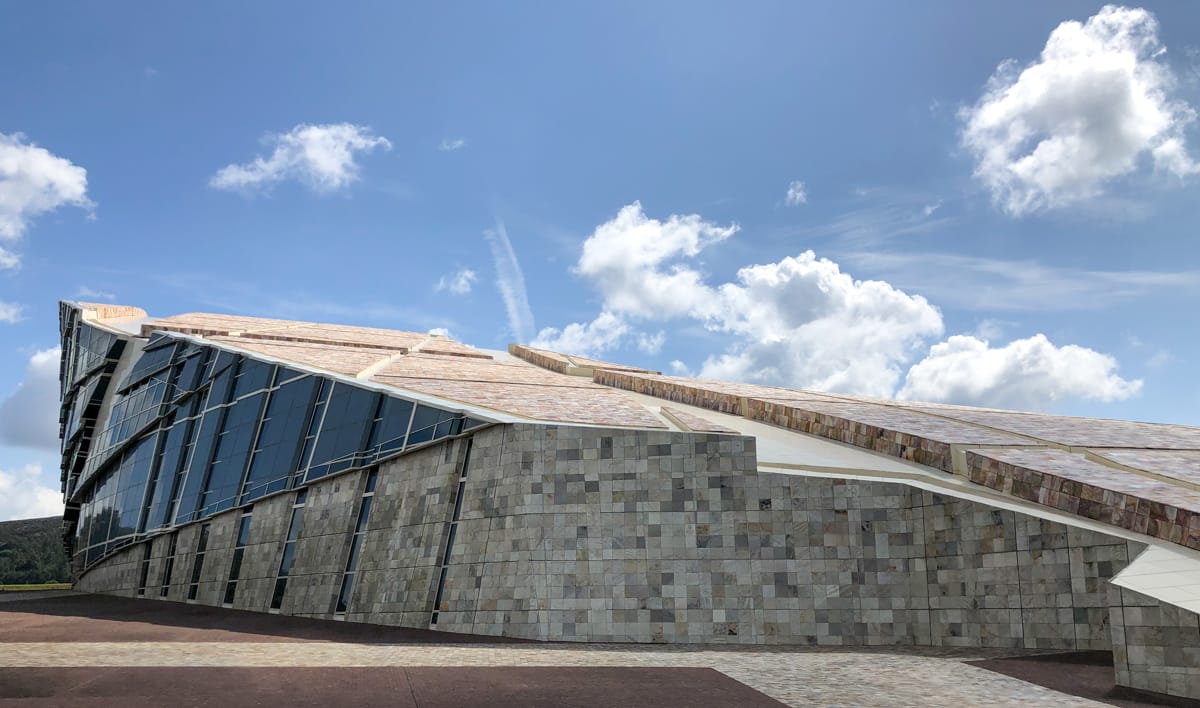
The Cidade da Cultura (City of Culture) is an impressive cultural complex located in Santiago de Compostela. Conceived as a flagship project to promote Galician culture and heritage, the Cidade da Cultura is a showcase of avant-garde architecture and a multidisciplinary center for art, education and creativity.
The Cidade da Cultura project was conceived in the early 1990s by American architect Peter Eisenman, who won the international design competition. The objective was to create a space that would represent the cultural diversity of Galicia and become a place of reference both nationally and internationally.
The complex consists of several buildings, which are distributed over an area of 170,000 square meters. The emblematic Clock Tower stands out, a high-rise structure that has become a symbol of the Cidade da Cultura. In addition to the tower, the complex has the Gaiás Center Museum, which houses permanent and temporary exhibitions related to Galician art and culture.
One of the highlights of the Cidade da Cultura is itsdiverse and vibrant cultural programming. The complex hosts numerous events, such as art exhibitions, concerts, plays, film screenings and conferences. These activities attract artists, intellectuals and visitors from all over the world, creating a dynamic and enriching environment.
In addition to its cultural programming, the Cidade da Cultura also houses the Library and Archive of Galicia, a reference center for the research and study of Galician cultural heritage. The library has an extensive collection of books, newspapers and digital documents, while the archive houses a large amount of historical and cultural material from Galicia.
The Cidade da Cultura also offers open spaces and green areas, inviting visitors to stroll and enjoy the natural surroundings. The design of the complex combines contemporary architecture with the Galician landscape, producing a harmonious fusion between human creativity and natural beauty.
Since its inauguration in 2011, the Cidade da Cultura has played an important role in the promotion and dissemination of Galician culture. It has been internationally recognized for its innovative architectural design and its commitment to the preservation and promotion of cultural heritage. In addition, it has contributed to the economic and tourism development of Santiago de Compostela and the region of Galicia.
The Cidade da Cultura is a fascinating cultural complex that represents the creative and cultural spirit of Galicia. With its avant-garde architecture, diverse programming and commitment to heritage preservation, it has become a cultural reference and a must-see destination for art and culture lovers. The Cidade da Cultura is a place where history, creativity and innovation converge, creating a unique space for the expression and celebration of Galician culture.
News
Urban music invades Compostela at the Santiago Urban Fest
Santiago de Compostela will host next July 27th the Santiago Urban Fest, an event dedicated to urban music pioneer in Galicia. It will take place at the Praza Roxa, from 3 to 11 p.m., and some thirty artists will participate.
O Fechiño’ festival celebrates culture and local community
The parish of San Xoán de Fecha, in Santiago de Compostela, is preparing to host next Saturday, July 13, the third edition of the Festival Rupestre e de Proximidade ‘O Fechiño’.
The Apostle Festivities 2024 unveil their program
The Festivities of the Apostle return to Santiago de Compostela from July 19 to 31, with a program with activities for all audiences and that highlights the culture of the city.


